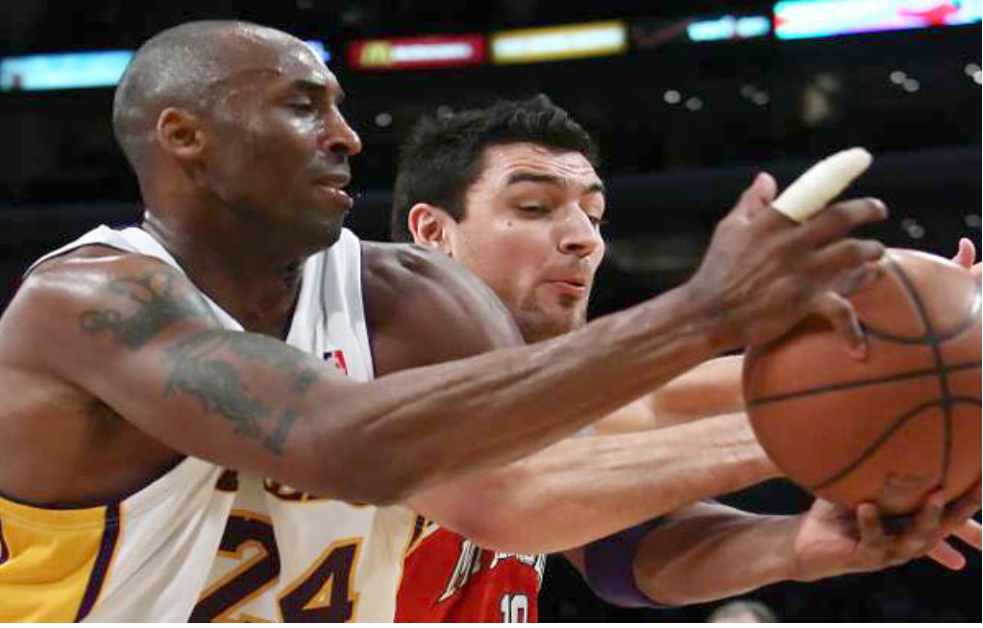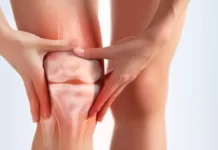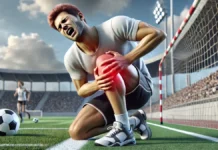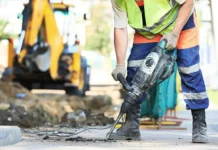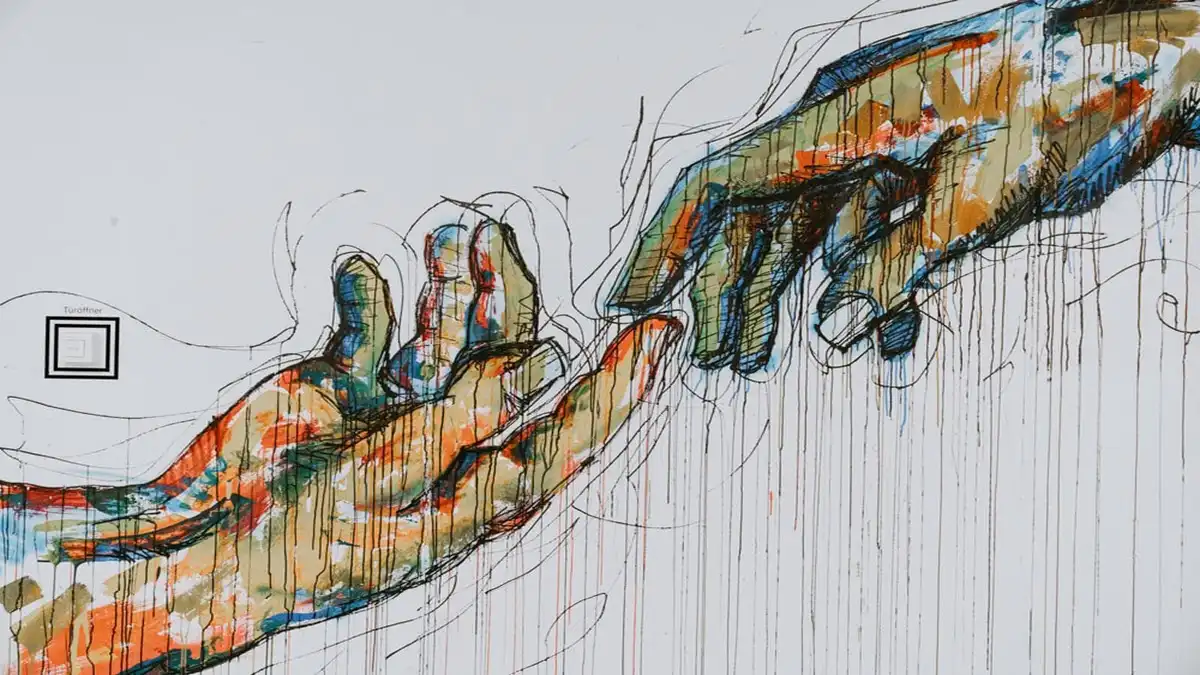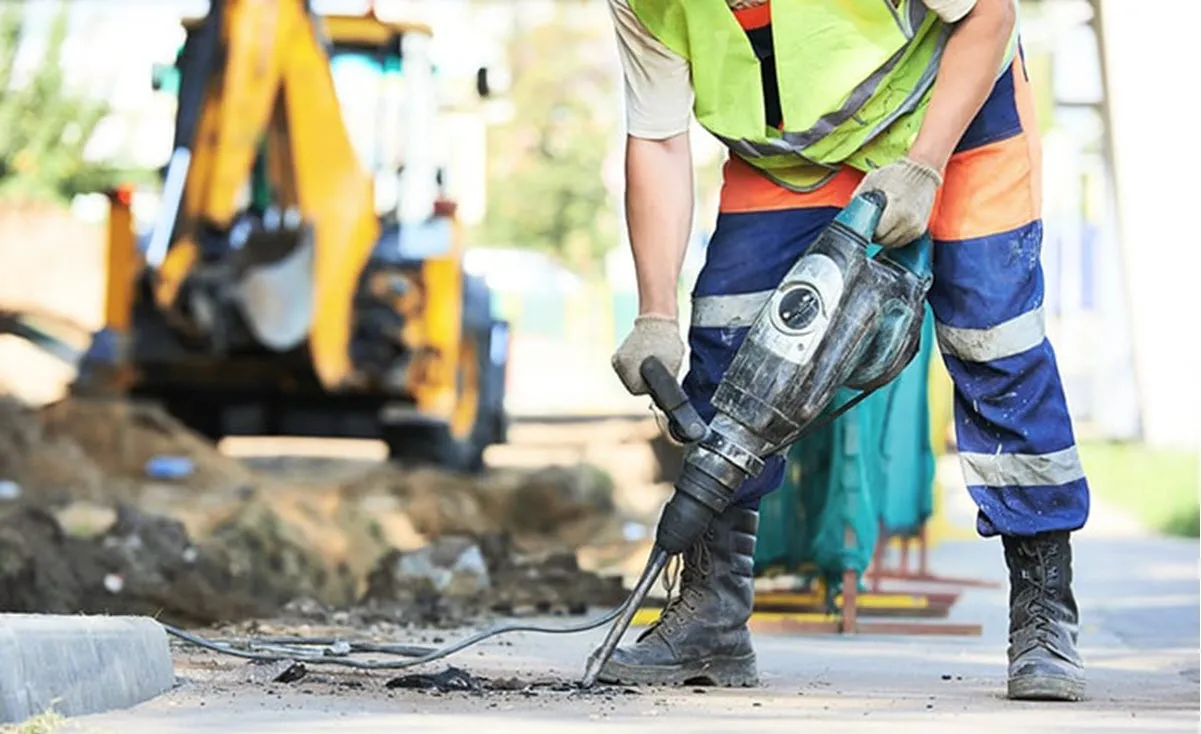Introduction
Finger sprain is a common injury resulting from overstrain or tearing of the ligaments that stabilize the finger joints. These ligaments, essential for finger mobility and stability, can be affected by sudden movements, direct trauma, or excessive stress. Sprains can range in severity from simple overstrain to more severe ligament tears.
This injury can occur in a variety of settings, from sports accidents to household incidents, and can result in a range of symptoms, such as pain, swelling, and limitations in finger movement. Understanding the pathophysiology of finger sprain is essential to assess the severity of the injury and guide the appropriate treatment plan.
In this exploration, we take a close look at the nature of finger sprains, addressing risk factors, characteristic symptoms, diagnostic methods, and treatment approaches. By understanding the underlying mechanisms of this common injury, we are better equipped to make informed care decisions and facilitate an optimal healing process.
Types of Finger Sprains
Finger sprains can be divided into two main categories based on their severity: mild sprains and severe sprains. The differentiation between these two types of sprains usually depends on the extent of ligament damage and the severity of symptoms. Here is a distinction between mild and severe finger sprains:
Mild Sprain
- Mild to moderate pain: Pain is present, but usually bearable. It may be more intense when using the finger.
- Moderate swelling: Mild swelling may occur, but it is not very pronounced.
- Preserved mobility: The ability to move the finger is usually preserved, although pain may slightly limit mobility.
- Minor Bruising: Minor bruising may occur, but it is not very extensive.
- Quick Recovery: With proper treatment, mild sprains tend to heal more quickly, often within a few days to a few weeks.
Severe Sprain
- Severe pain: The pain is usually severe and can be felt even at rest. It can significantly limit the use of the finger.
- Significant swelling: Significant swelling of the affected joint may occur, which may spread to other parts of the finger.
- Limited mobility: The ability to move the finger is often severely compromised due to pain and swelling.
- Extensive bruising: Large, extensive bruising may occur, indicating significant rupture of blood vessels.
- Prolonged recovery: Severe sprains usually require more intensive treatment and prolonged recovery, sometimes several weeks or months.
Common Symptoms of a Sprained Finger
- Pain: Pain is often felt in the injured finger, especially during movement or pressure.
- Swelling: Swelling may develop around the affected finger due to inflammation of the tissues.
- Bruising: Bruising or bruising may occur, resulting from the rupture of small blood vessels during the sprain.
- Difficulty moving the finger: The range of motion of the finger may be reduced due to pain and swelling.
- Sensitivity: The finger may be more sensitive to touch, and pressure on the injured area may cause pain.
- Warmth: The affected area may become slightly warmer than other parts of the finger due to inflammation.
Causes and risk factors
A finger sprain usually occurs when the ligaments that hold the bones of the finger in place are stretched beyond their normal range or even torn. Common causes of a finger sprain include:
- Direct trauma: A direct blow to the finger, such as from a fall, impact with an object, or a sports accident, can cause a sprain.
- Sudden movements: Sudden movements, such as twisting or forcibly bending the finger, can result in ligament injuries.
- Catching a ball: In some sports, such as baseball or cricket, catching a ball can result in a sprained finger.
- Household Accidents: Sprained fingers can also occur during household accidents, such as getting your finger caught in a door.
- Hyperextension: Hyperextension of the finger, often associated with sporting activities, can cause a sprain.
Pathophysiology
- Overstretching: The sprain usually begins with overstretching of the ligaments beyond their normal range. This can occur during sudden flexion, extension, or twisting of the finger.
- Micro-tears: When ligaments undergo intense stretching, micro-tears can occur. These tears can be tiny, affecting only a few ligament fibers, or larger, involving a larger portion of the ligament.
- Inflammation: Micro-tears trigger an inflammatory response. This inflammation is characterized by the release of inflammatory chemicals, causing redness, warmth, swelling, and pain at the sprain site.
- Bruising: Small blood vessels in the area may become damaged during the sprain, leading to bruising or black spots around the finger.
- Tissue repair: The healing process begins with the formation of scar tissue. Special cells, called fibroblasts, produce new extracellular matrix to replace damaged areas of ligaments.
Diagnosis and treatment
Diagnosing a sprained finger typically involves a thorough medical evaluation, based on the patient’s medical history, a physical exam, and sometimes imaging tests. Here are the common steps in the diagnostic process:
Clinical Evaluation
- Medical History: The doctor will begin by gathering information about the circumstances of the injury, the symptoms experienced, medical history and any pre-existing conditions.
- Physical Exam: The physical exam focuses on the affected joint. The doctor will assess pain, swelling, mobility, muscle strength, and look for signs of joint instability.
Imaging Exams
- X-rays: X-rays may be taken to rule out associated fractures. Although sprains do not show up on X-rays, they can help ensure that no bones are broken.
- Ultrasound: Ultrasound can be used to assess damage to soft tissues, such as ligaments. It is a real-time imaging technique that can help identify ligament injuries.
- MRI (Magnetic Resonance Imaging): MRI is a more advanced method of obtaining detailed images of internal structures, including ligaments, tendons, and other soft tissues. It can be used to assess the severity of ligament injuries.
Non-surgical treatment options
- Rest: Avoid using the injured finger as much as possible to allow for optimal healing.
- Immobilization: Use a splint or bandage to immobilize the finger and reduce movements that could aggravate the injury. This can help prevent excessive strain on the ligaments.
- Elevation: Keep the finger elevated as much as possible to reduce swelling.
- Ice Application: Apply ice to the injured area for 15 to 20 minutes every hour for the first 48 hours. This can help reduce inflammation and relieve pain.
- Compression: Use a compression bandage to reduce swelling. Be sure not to tighten too much to avoid compromising blood circulation.
- Nonsteroidal anti-inflammatory drugs (NSAIDs): Medications such as ibuprofen or naproxen can help reduce pain and inflammation. However, consult a healthcare professional before taking any medications, especially if you have underlying health conditions.
- Rehabilitation Exercises: Once the initial healing phase has passed, rehabilitation exercises may be prescribed to restore strength and mobility to the finger.
Rehabilitation after a sprained finger
Finger sprain rehabilitation is crucial to promote full recovery, restore finger strength, flexibility, and functionality, and prevent long-term complications. Rehabilitation exercises are specifically designed to strengthen muscles, improve coordination, and restore the finger’s full range of motion. Here’s why these exercises are important in the finger sprain recovery process:
- Restoring joint mobility: Rehabilitation exercises help prevent joint stiffness by promoting a full range of motion. This may include finger flexion, extension, abduction, and adduction exercises.
- Muscle strengthening: Sprains can weaken the muscles around the finger. Targeted strengthening exercises help restore muscle strength, stabilizing the joint and reducing the risk of future injury.
- Improved coordination: Sprains can disrupt coordination between muscles and tendons. Rehabilitation exercises aim to restore this coordination, thereby improving the overall function of the finger.
- Prevention of adhesions and contractures: Exercises help prevent the formation of adhesions and contractures, which can result from excessive tissue healing and limit finger mobility.
- Reducing the risk of re-injury: Proper rehabilitation helps reduce the risk of new sprains by strengthening the ligament and muscle structures, which increases the stability of the joint.
- Pain and inflammation management: Certain rehabilitation exercises can help improve blood circulation, thereby reducing pain and inflammation associated with the sprain.
- Functional adaptation: Rehabilitation exercises are designed to replicate everyday movements and activities, helping the patient regain normal finger function in real-life situations.
It is important to emphasize that rehabilitation should be progressive, starting with gentle, simple exercises and progressing to more complex activities as healing progresses.
Immobilization and splints
Immobilization with splints is often used in the treatment of sprains and other limb injuries. These devices provide structural support, reduce unwanted movement, and thus promote healing. Here are some ways immobilization and splints can help in the healing process:
- Reducing Excessive Motion: Immobilization with splints limits unwanted movement of the injured area. This is especially important in sprains, where ligaments can be stretched or torn. Reducing excessive motion allows injured structures to rest and recover.
- Joint Stabilization: Splints provide structural support to the affected joint, stabilizing the injured area. This helps prevent further trauma, reduce the risk of complications, and promote optimal healing.
- Reduced inflammation and swelling: By limiting movement and providing support, splints help reduce inflammation and swelling. This can be especially beneficial in the early stages of injury, helping to minimize pain and create an environment conducive to healing.
- Soft tissue protection: Immobilization protects soft tissues, such as ligaments and muscles, by preventing excessive stress that could compromise the healing process. It also helps minimize the risk of complications, such as excessive adhesion or scarring.
- Facilitating the healing process: By providing a stable environment and limiting unwanted movements, splints facilitate the healing process by allowing damaged tissues to repair themselves optimally.
- Maintaining Correct Position: In some cases, immobilization may be used to maintain a specific position, thereby promoting healing in an anatomically correct position.
It is important to note that immobilization and the use of splints should be done under the supervision of a healthcare professional.
Finger Sprain Prevention
Preventing finger sprains is essential to avoid injuries that can lead to pain, loss of mobility, and long-term complications. Here are some tips to prevent finger sprains:
- Warm-up: Before participating in sports activities or physical tasks involving the hands, be sure to do warm-up exercises to prepare the muscles and joints.
- Muscle strengthening: Strengthen the muscles in your hand and fingers through regular exercise. This may include using resistance bands or specific exercises recommended by a healthcare professional.
- Proper Technique: When participating in sports or manual tasks, be sure to use proper technique to avoid sudden or excessive movements that could result in a sprain.
- Proper Protection: Wear appropriate gloves when engaging in activities that may cause finger injuries, such as gardening, DIY, or certain sports.
- Avoid risky positions: Avoid putting your fingers in risky positions, such as using your hands to stop a fall or gripping a heavy object incorrectly.
- Ergonomic Work: If you regularly work on a computer or perform repetitive tasks with your hands, make sure you have an ergonomic setup to avoid fatigue and excessive stress on your fingers.
- Regular breaks: If you perform repetitive tasks or use your hands frequently, take regular breaks to allow muscles and joints to relax.
- Maintaining strength and flexibility: Engage in regular activities to maintain muscle strength and flexibility in your hands and fingers, such as practicing yoga or specific exercises recommended by a professional.
- Use of Protective Equipment: When participating in sports activities, be sure to use appropriate protective equipment, such as sports gloves, to reduce the risk of finger injuries.
- Avoid distractions: When engaged in activities that require precise hand and finger coordination, avoid distractions to minimize the risk of accidents.
If you have ever had a sprained finger or have concerns about preventing sprains, consult a healthcare professional.
Protective equipment and sprains
Protective equipment, including gloves and other devices, plays a crucial role in preventing sprains and other hand injuries. Here are some points that highlight the importance of gloves and other protective equipment:
- Impact Reduction: Padded gloves, especially those designed for contact sports or manual activities, can help absorb shock and reduce the force of impacts on the hands, minimizing the risk of sprains.
- Joint stabilization: Some gloves and protective devices provide structural support to the joints, helping to stabilize the hands and prevent excessive movement that could lead to sprains.
- Cut and Abrasion Protection: Cut and abrasion resistant gloves provide a physical barrier against sharp and rough objects, reducing the risk of indirect sprains resulting from cuts or abrasions.
- Twist Prevention: Some gloves are designed to provide extra protection around the wrists, which can help prevent twists and sprains in the wrist.
- Heat retention: In cold environments, wearing gloves can keep hands warm, improving blood circulation and reducing the risk of injuries, including sprains.
- Improved Grip: Gloves designed to improve grip help maintain a firm hold on objects, reducing the risk of accidental slips and sprains resulting from loss of control.
- Chemical Protection: Proper protective gloves are essential in environments where hazardous chemicals are present. They protect against skin irritation and chemical reactions that could weaken tissues.
- Vibration Reduction: Some gloves are designed to absorb vibrations, reducing stress on the hands when using vibrating tools and preventing sprains associated with repetitive motions.
- Avoid sharp objects: Wearing cut-resistant gloves prevents injuries from sharp or pointed objects, helping to reduce the risk of sprains resulting from direct injuries.
- Compliance with safety standards: Wearing protective equipment that complies with safety standards ensures that hands are adequately protected against the specific risks associated with a particular activity.
It is essential to choose the right protective equipment based on the specific risks you are exposed to. Whether at work, during sports activities or in other situations, wearing protective equipment can significantly help prevent sprains and keep your hands safe.
Conclusion
In conclusion, finger sprain is a common injury caused by overstrain or tearing of the ligaments that stabilize the finger joints. This injury can vary in severity, from simple overstrain to more severe ligament tears. It can occur in various contexts, from sports accidents to domestic incidents, and is manifested by symptoms such as pain, swelling, and limitations in finger movement.
Understanding the pathophysiology of finger sprain is essential to assess the severity of the injury and guide the appropriate treatment plan. Thorough exploration of finger sprains, addressing risk factors, symptoms, diagnostic methods, and treatment approaches, allows individuals to make informed care decisions and facilitates an optimal healing process.
Finger sprains can be classified into mild and severe sprains depending on the severity of ligament damage and the severity of symptoms. Common symptoms include pain, swelling, bruising, difficulty moving the finger, tenderness, and warmth in the affected area.
Diagnosis of a finger sprain involves a thorough clinical evaluation, possibly supported by imaging tests such as X-rays, ultrasound, or MRI.
Treatment for finger sprains can often be nonsurgical, involving rest, immobilization with splints, elevation, ice, compression, use of anti-inflammatory medications, and rehabilitation exercises. Rehabilitation is crucial to restore mobility, muscle strength, and coordination, thereby preventing long-term complications.
Splints play an important role in treatment by limiting excessive movement, stabilizing the joint, reducing inflammation, protecting soft tissues, facilitating healing, and maintaining correct position.
Finally, prevention of finger sprains is essential and can be achieved through practices such as warm-up, muscle strengthening, use of proper technique, adequate protection, avoidance of risky positions, ergonomic work, regular breaks, maintenance of strength and flexibility, and use of protective equipment such as gloves. Compliance with safety standards is crucial to ensure adequate protection against the specific risks associated with a particular activity. In summary, a comprehensive preventive approach and appropriate use of protective equipment contribute significantly to reducing the risks of finger sprains.
References
- Mayo Clinic: “Sprains and strains,” “Sprain: First Aid. »
- Winchester Hospital: “Finger Sprain.”
- Cleveland Clinic: “Finger Sprins.”

